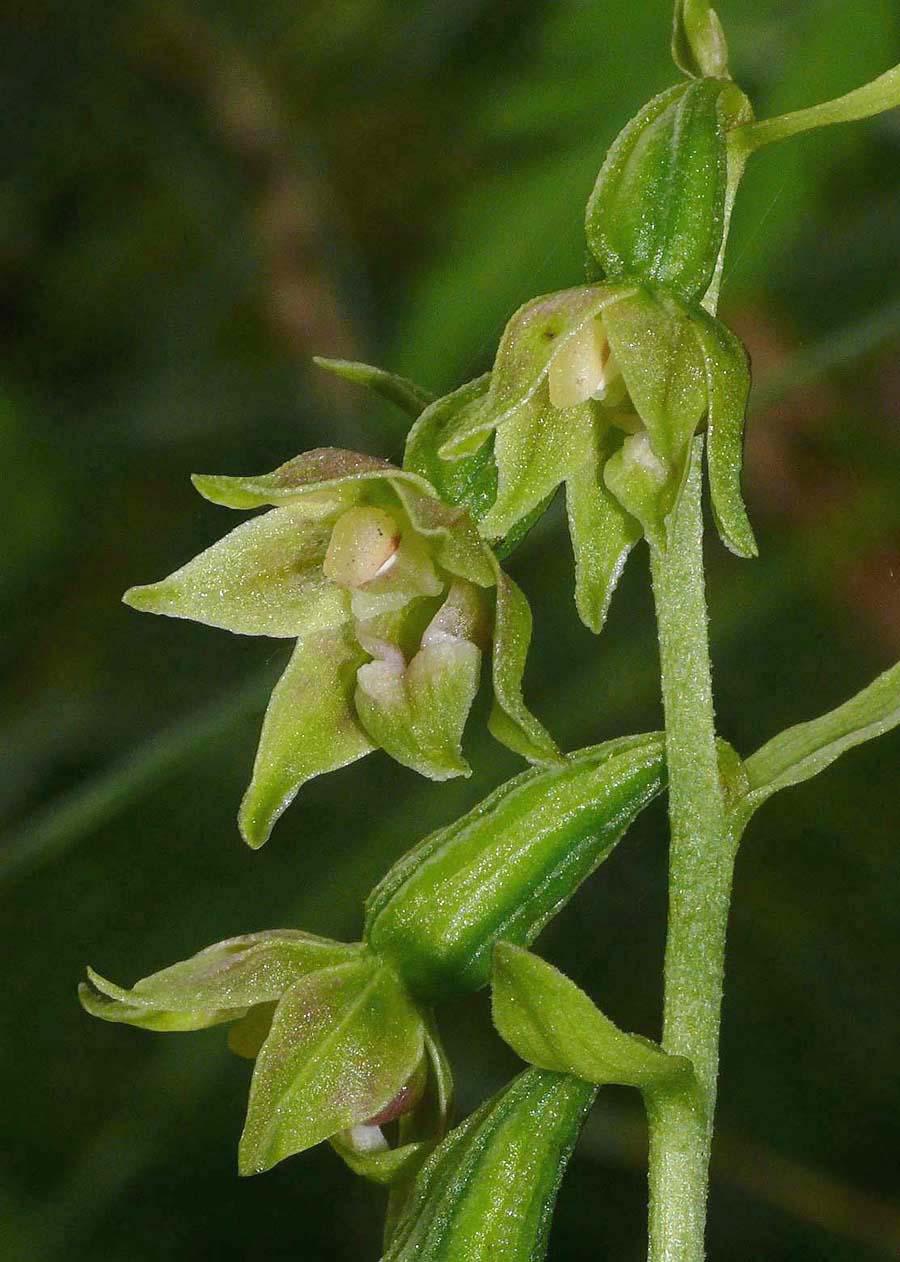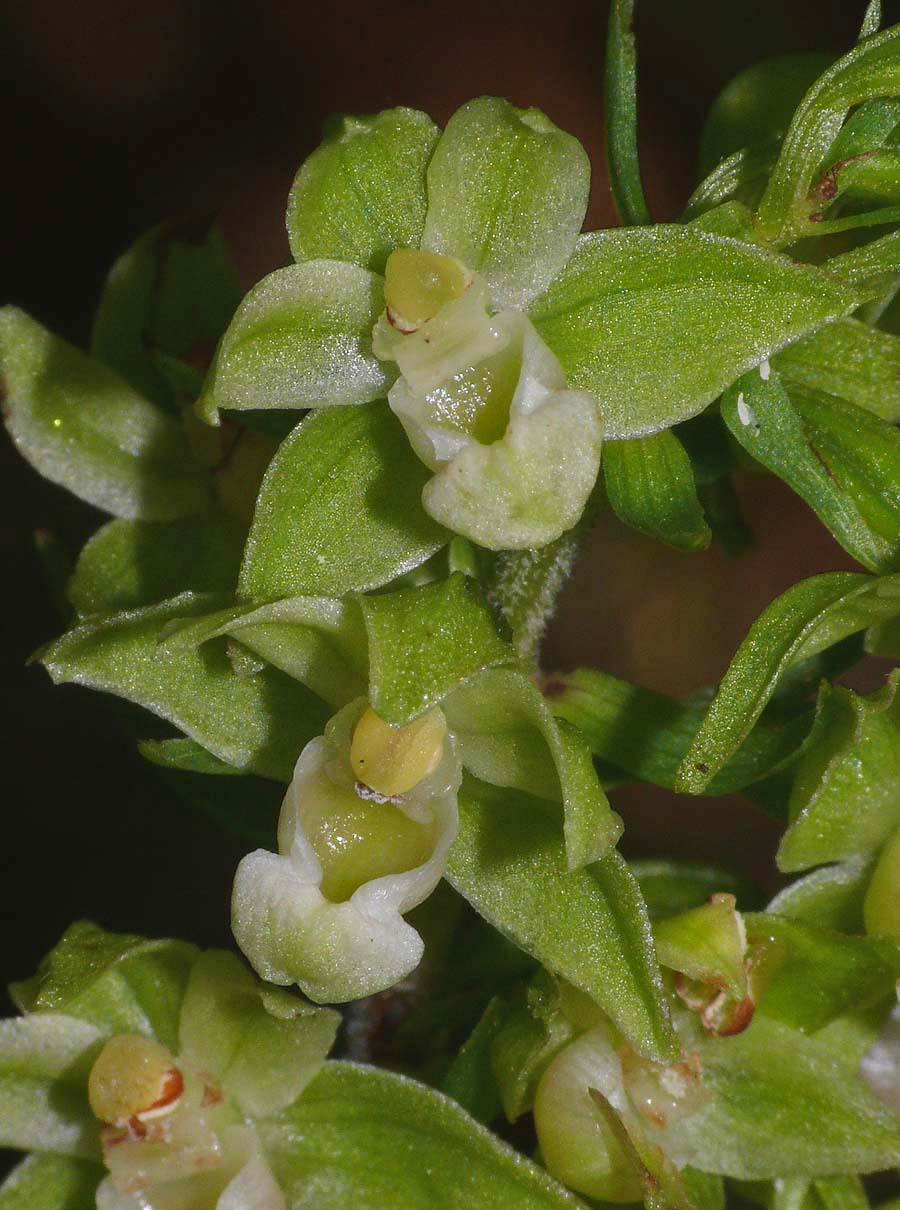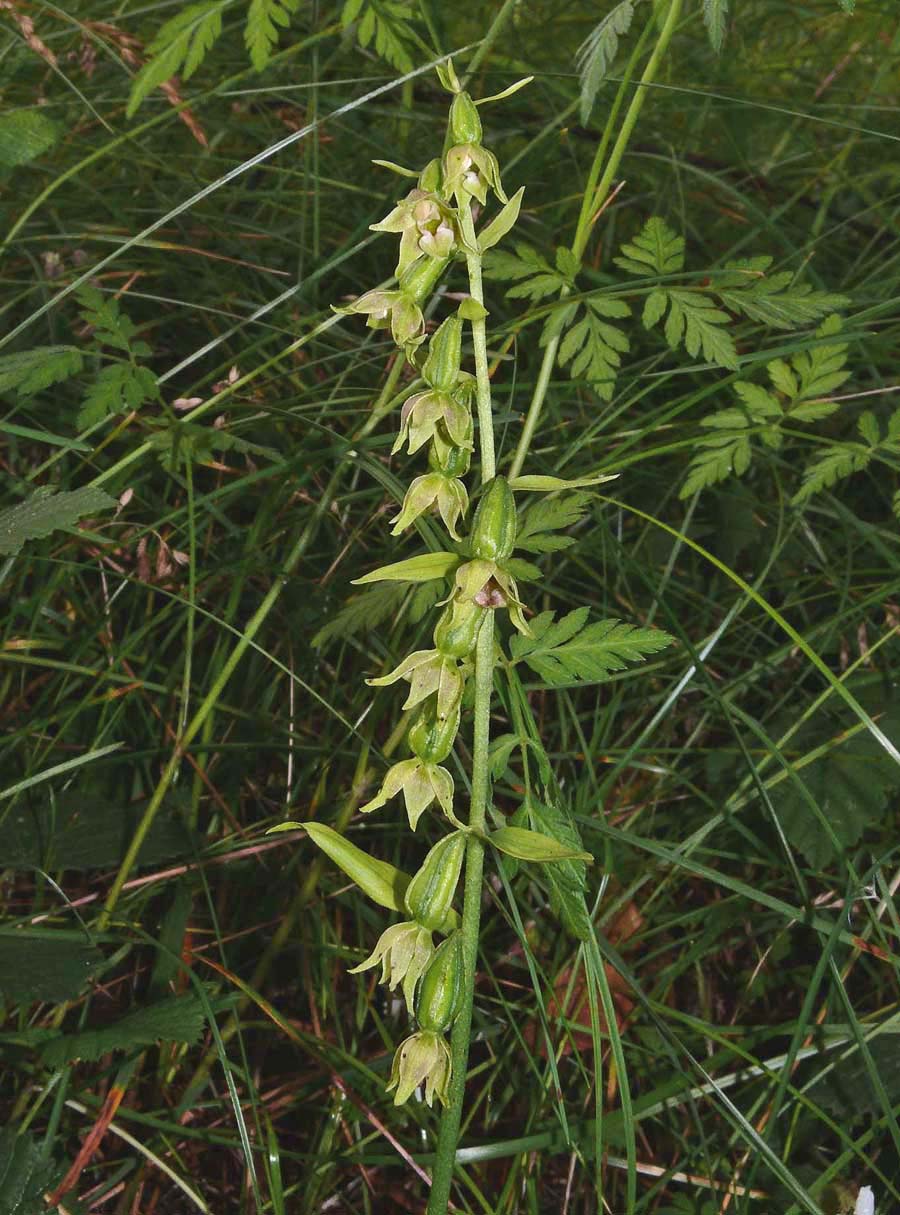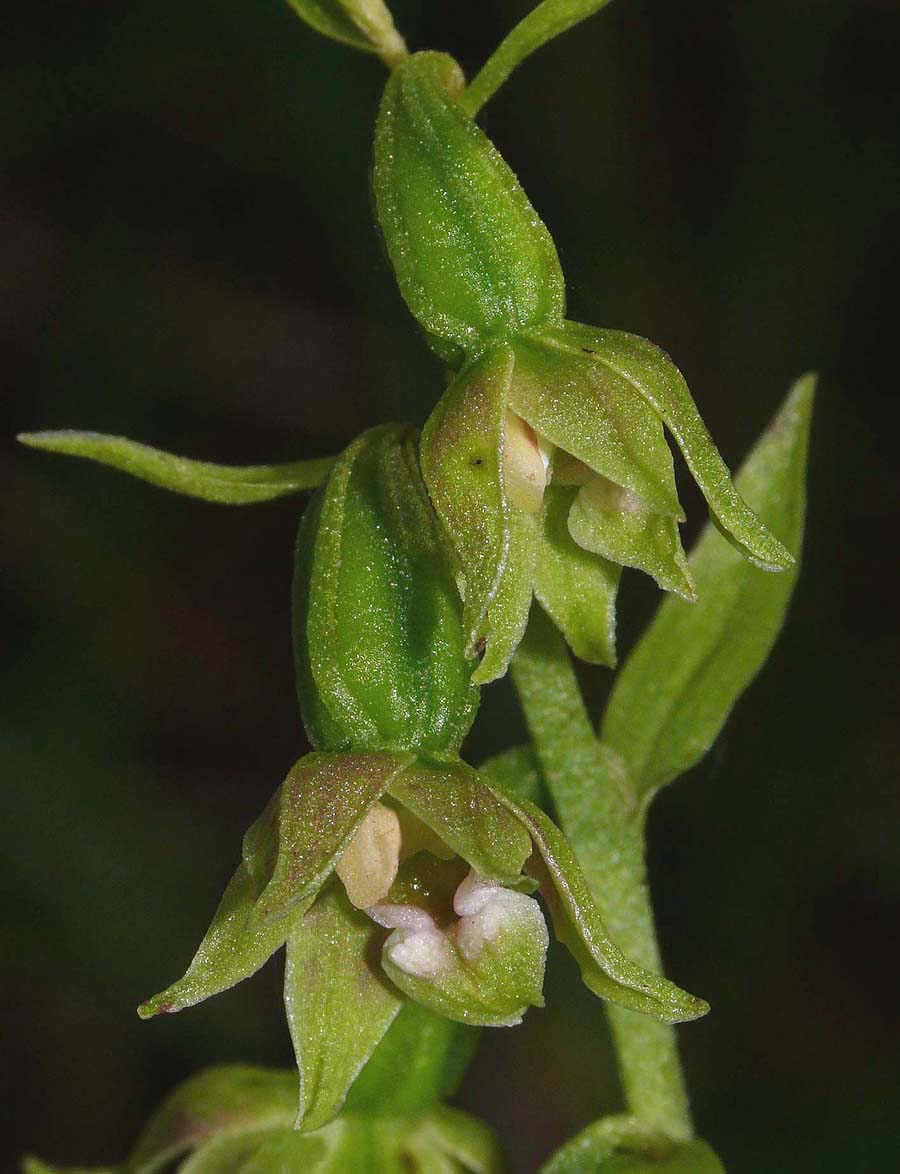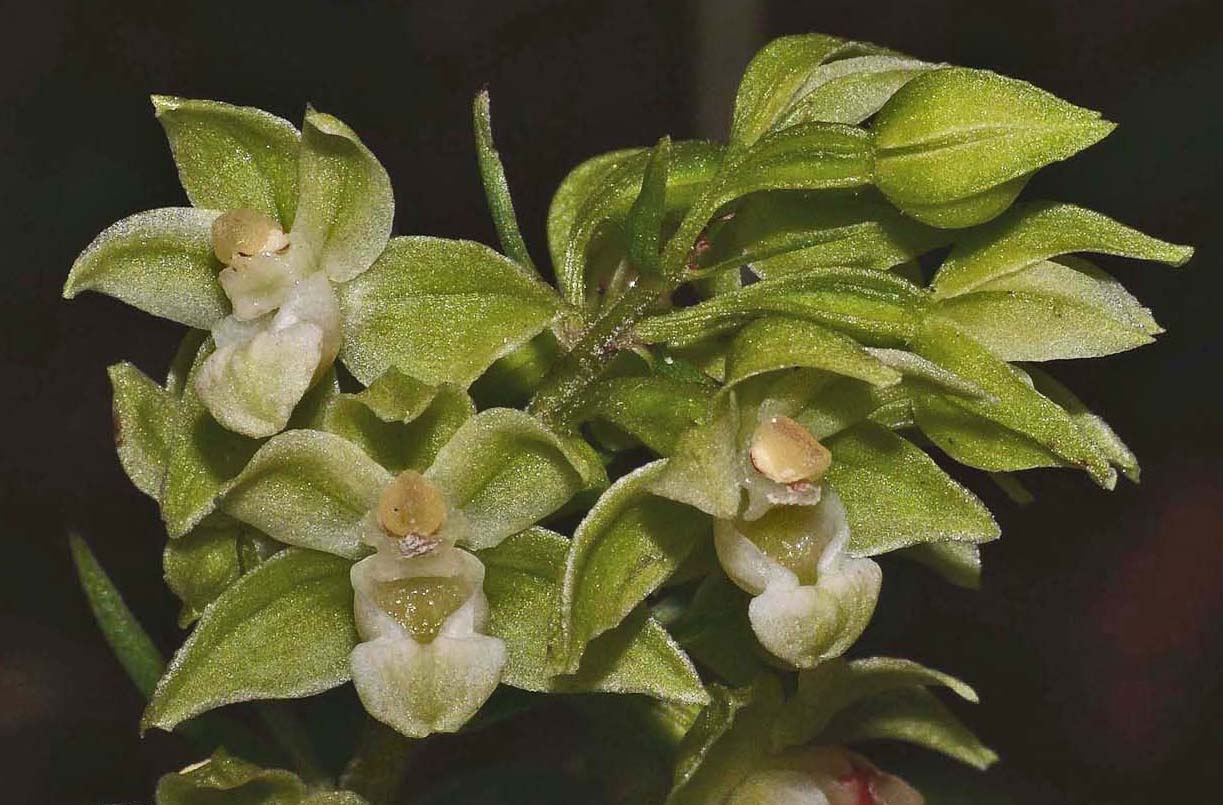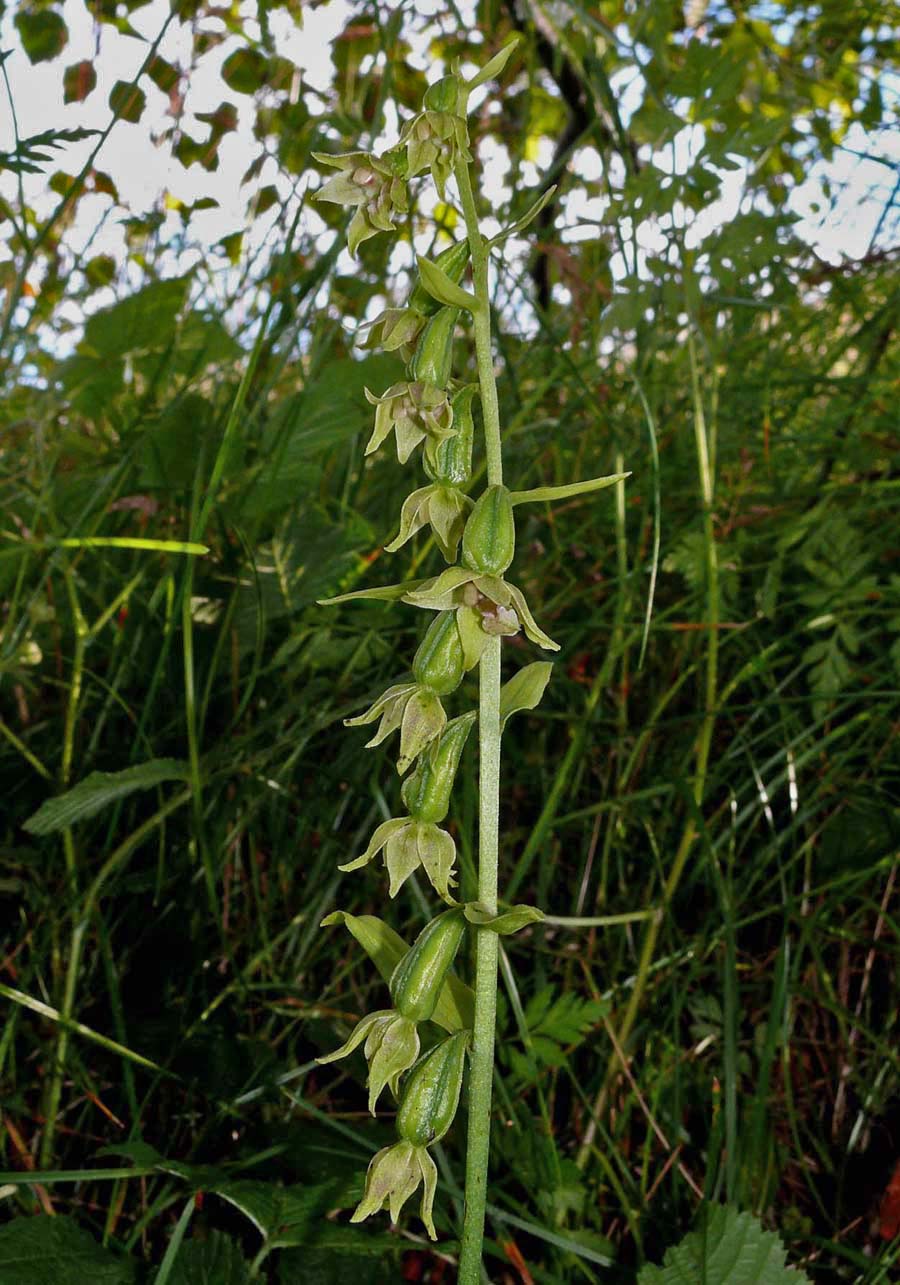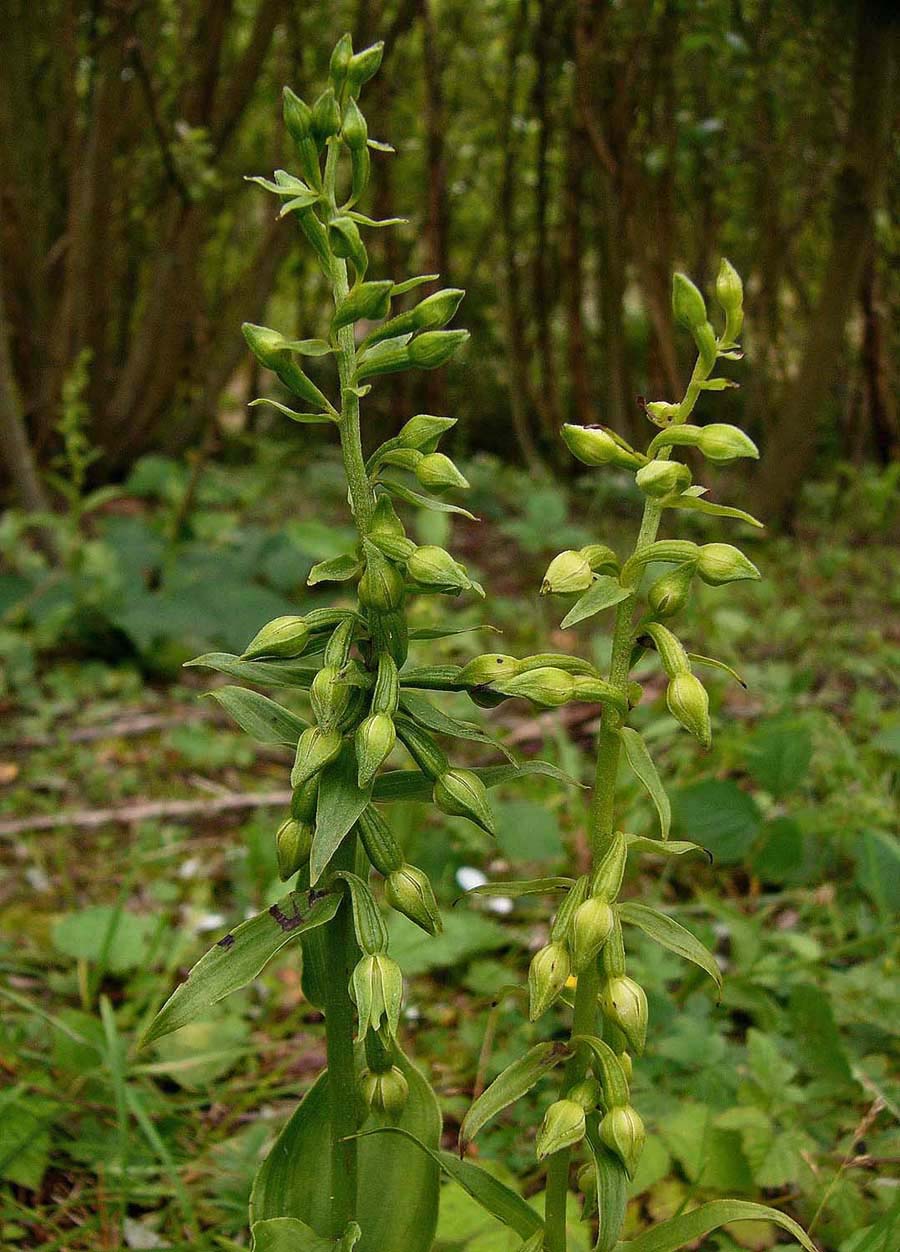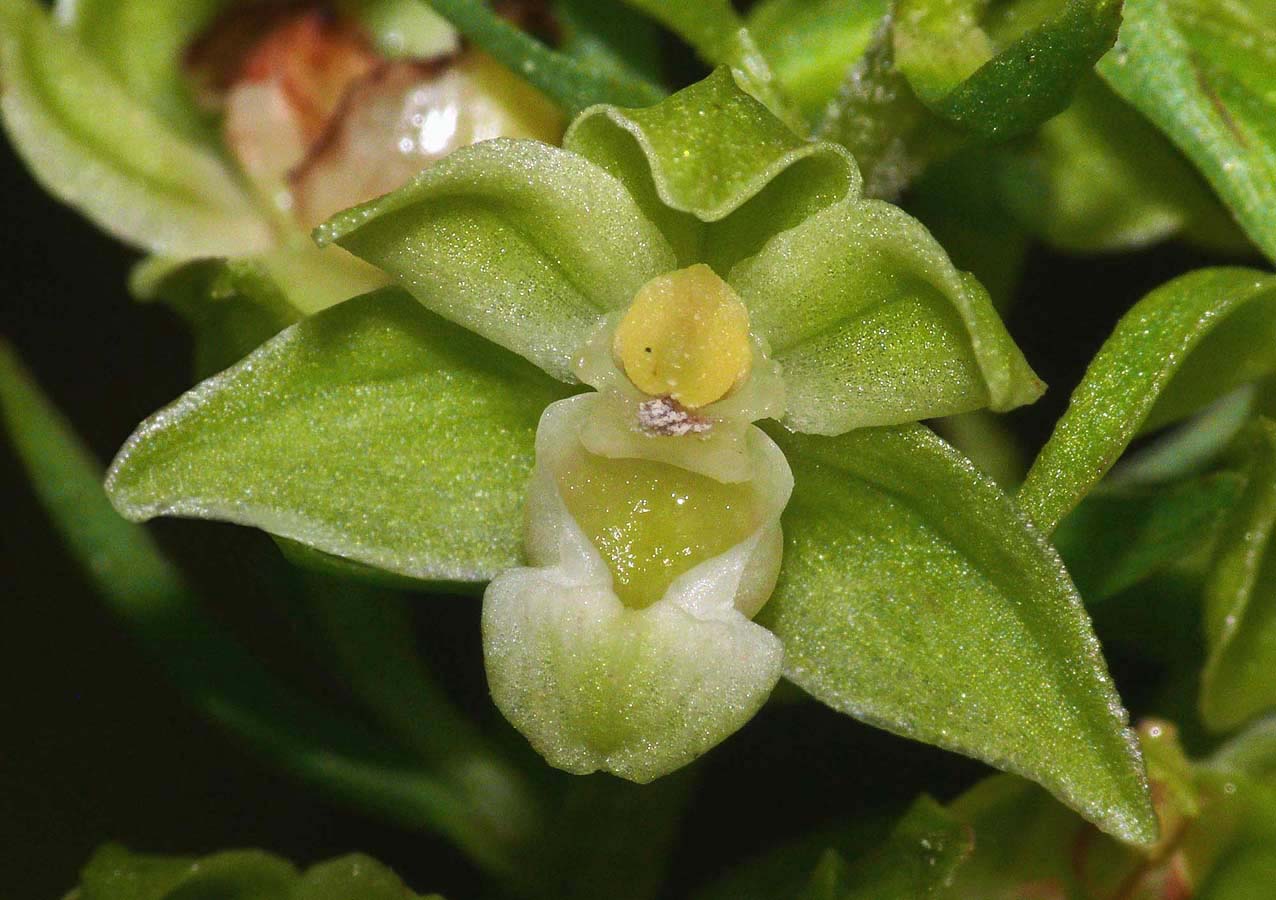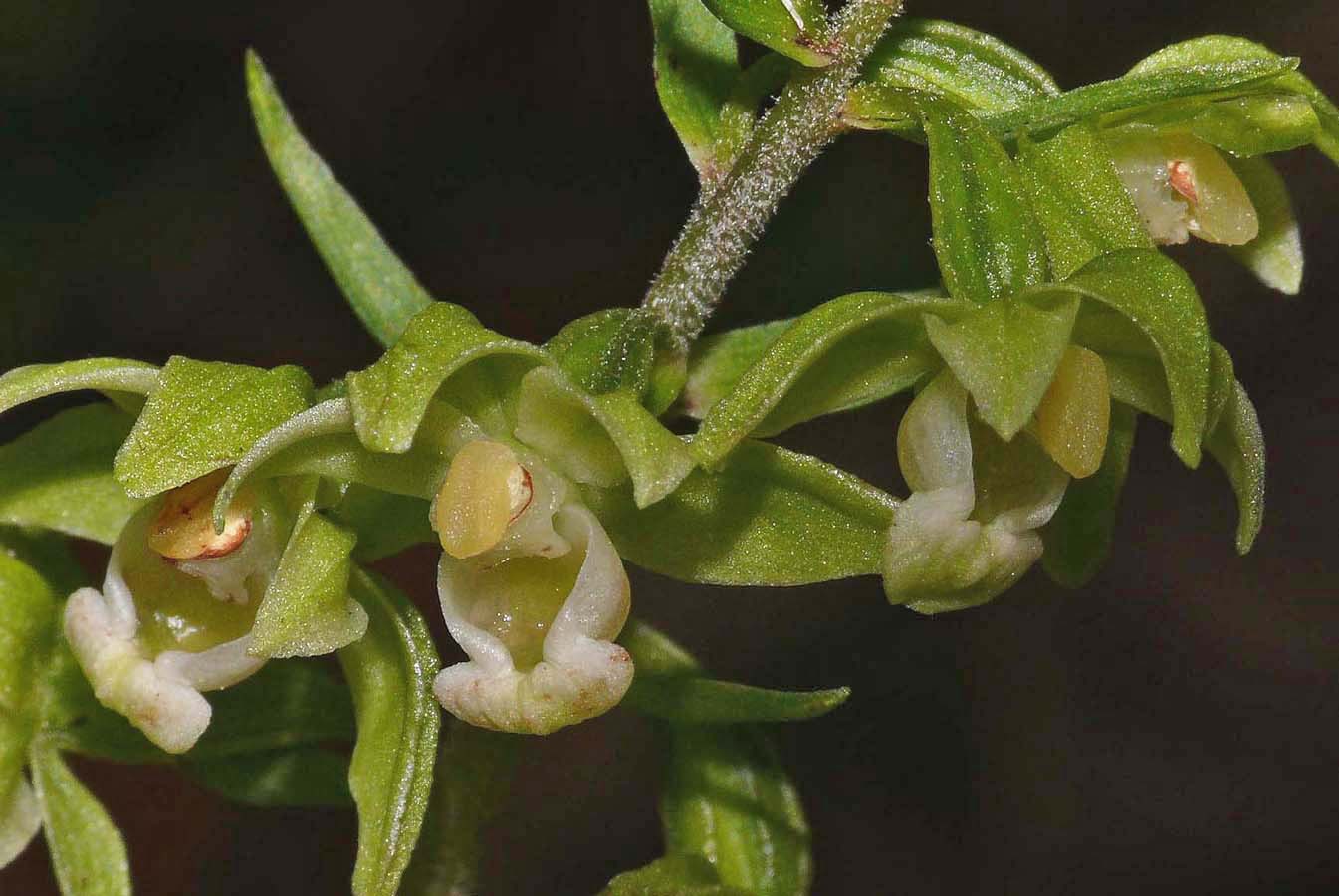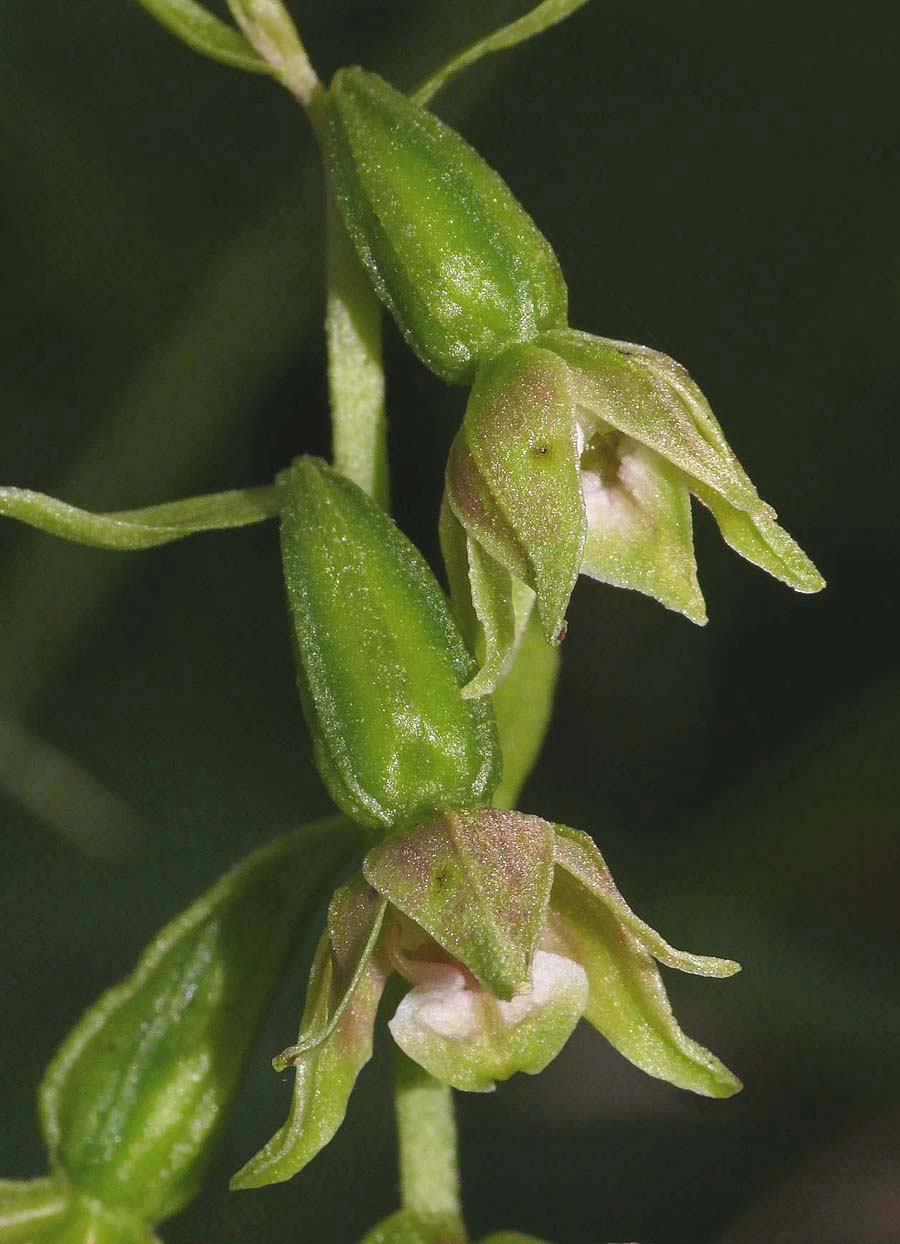E. phyllantheswas
first described by G. E. Smith from Sussex, England in 1852
but since that time several varieties have been recognized,
albeit that the validity and status of these have been the subject of
some professional disagreement. The
situation in the UK
is relatively clear with five variations being recognized, these being E. phyllanthes v cambrensis, E. phyllanthes v vectensis, E. phyllanthes v degenera, E. phyllanthes v phyllanthes and the variety described here E. phyllanthes v pendula.
Pendula
is a largely northern European variety at its most frequent in Britain.
Its varietal name refers to the pendulous nature of the inflorescence
and is commonly known as the Green Flowered Helleborine.
Pendula
was discovered by Charles
Thomas whilst walking on the Ainsdale dunes near Southport, Lancashire
in July 1941 when it was initially regarded as a full species
(E. pendula). Subsequent studies linked it closely to other Epipactis species and most importantly to the Isle of White Helleborine, E. vectensis. In recent times however both it and E. vectensis have
been reduced in classification to varieties and there seems no certainty that
even this status is secure.
As long ago as 1962, D. P. Young noted that "there is no material
dividing line, either geographical or morphological,
between pendula and vectensis and the names are retained only for the convenience of description". Intermediate plants are not uncommon.
The distribution of pendula
in the UK
was at first thought to be northern but it's now known from a wider
area and not least the dunes of South Wales where in one particular
system it can be found growing in close proximity to both vectensis and cambrensis.
It is recognizable by its robust size, fully opening flowers and most importantly the heart shaped
epichile which recurves soon after opening.
